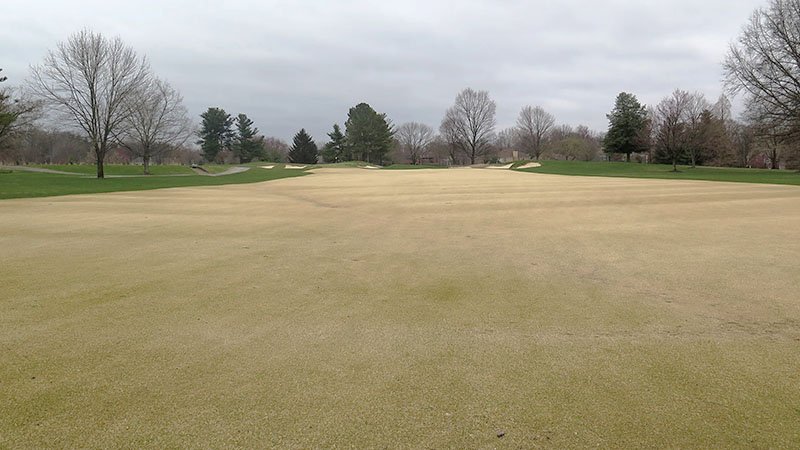
While many people took time away from work around the Christmas holiday, Mother Nature was hard at work every day making her presence known on golf courses throughout the transition zone.
Christmas Eve ushered in a week of unseasonably cold weather throughout the transition zone, the effects of which are still felt today in warm-season turf that has been slow to green up and has been susceptible to traffic.
Early in December, temperatures in Knoxville, Tennessee reached into the 50s and 60s for much of the first half of the month, and lows were in the 40s and 50, both of which are about 10 degrees above the historic average, according to the National Weather Service.
The day before Christmas, the low plummeted to 4 degrees, and remained below freezing for a week.
Damage did not take out entire fairways, but has taken out significant swaths of turf.
"This year is the most significant winterkill I've seen in Tennessee in 10 or 12 years," said Brandon Horvath, Ph.D., turfgrass pathologist at the University of Tennessee. "It's concentrated areas that have to be resodded, not whole fairways. But, it's going to take time to come back."
"In Tennessee, it wasn't on greens, because just about everybody has covers now. Greens where the covers blew off, they're set back."
Golf courses throughout much of the transition zone manage several turf types in fairways, including newer and older varieties of Bermudagrass zoysiagrass.
After lows of 40 or more on eight of 12 days in early to mid-December, temperatures in Knoxville dipped below freezing for eight consecutive days.
Tricking the grass into "thinking" it might be spring, then cratering to single digits helped produce conditions that continue to persist on many golf courses in the transition zone that have Bermudagrass or zoysiagrass fairways. The USGA Green Section also suggests encouraging golfers to walk when playing on fully dormant turf.
"There is still a lot of 419, and there is a lot of Tahoma and Northbridge," Horvath said. "And we're seeing damage in some zoysias.
"Turf wasn't fully dormant. It was in an in-between stage, and in some places it got dinged pretty hard. Damage was variable. There were areas where there were no problems, and other areas where the damage was significant.
"The turf wakes up and then goes back to bed. That takes carbohydrates to green up. Do that three or four times, the turf is weakened, and that can set the turf back."
Areas showing the most damage are those affected by high cart traffic during winter play, such as exit and entry points on the fairways, or those where other issues, such as poor drainage, persist.
"There were issues with where the wheels were constantly in the same area, then the areas between the wheels are OK," Horvath said.
"Weaker areas definitely were more susceptible. Turf in areas where other factors played a role, if it's too wet or too dry, the cold can be problematic."
Horvath says the best way to manage turf that struggles in spring and minimize damage is to control traffic through tactics such as altering fairway entry and exit points.
"We play on dormant turf all the time," he said. "But you have to manage cart traffic."

